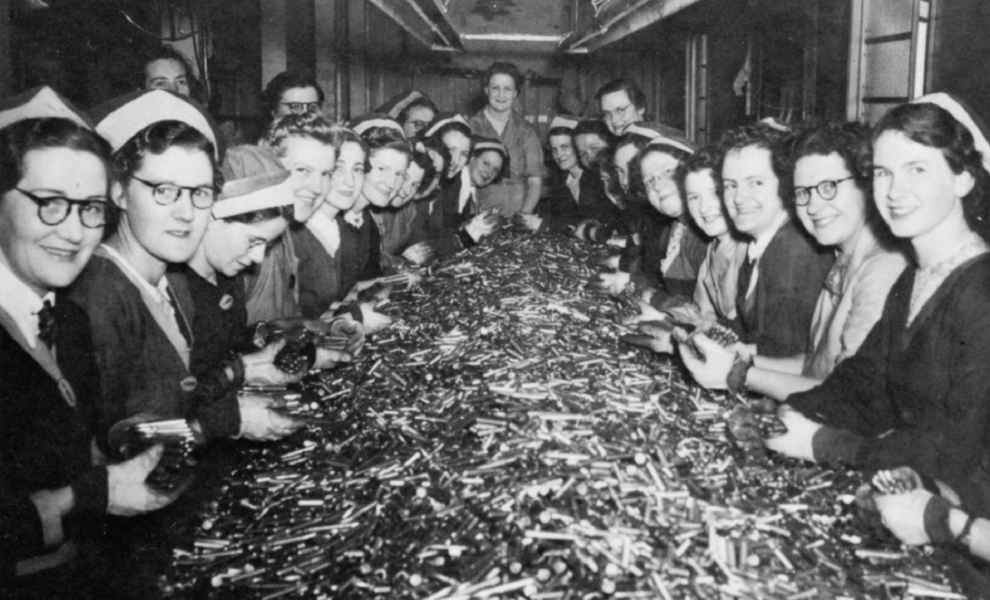By Elizabeth Minter
The bravery and suffering of Australian soldiers in the various theatres of World War I and II has been covered comprehensively. Less attention has been given to what went on at home during the war years, which explains the importance of The Logic of Logistics, an exhibition by Melbourne’s Living Museum of the West.
The culmination of three years’ work by the late Peter Haffenden and museum staff and volunteers, the exhibition reveals the critical contribution made by women to defence during both wars and the innovative defence-related industries that emerged in Melbourne’s inner west that transformed local manufacturing.
Peter was working on the exhibition until two weeks before he died in October 2022. His partner, Kerrie Poliness, said Peter was determined to finish the project. “He refused to go on holidays or take a break. It was his final gift to the community.”
From the first days of settlement, the colonies had imported all defence-related equipment, including gunpowder. However, the threat of war between Great Britain and Russia in the late 1880s highlighted the potential for disruption to the colony’s supply of small arms ammunition.
This led to the establishment, in 1890, of Australia’s first ammunition factory, the Colonial Ammunition Factory, in Nicholson Street, Footscray. About 200 women and boys were initially employed because their wages were lower than men’s. It was here that all the .303 bullets used by Australian troops in World War I were made. At the height of production, 2 million rounds were produced a week.

In the late 1890s, gunpowder was replaced by the far more powerful but smokeless cordite. Danger was ever present, particularly in the early days, a consequence of defective machinery and a lack of safety precautions and training. On 23 September 1897, an explosion killed three young women.
While the work may have been dangerous, for many women it was preferable to domestic service because of the relative freedom. Their work came to be highly valued: they were careful; dexterous; and paid attention to detail. Many were the sole family breadwinners at a time when employment for married women was scarce.
Newspaper reports, including The Weekly Times, noted their vital role: “750 young women are playing [a significant part] in the great war drama … [giving] up millinery, dressmaking and shop service … The cartridge making is practically entirely entrusted to the women.”
In her book The Forgotten Girls of World War I, Judy Maddigan points out the significant opposition to women working in the munitions factory, particularly from the establishment and middle-class women’s organisations, whose members had a vested interest in maintaining the supply of household servants from the working classes.
This opposition was couched in terms of a lack of control over women’s moral welfare in factories, the dangers they faced in the streets before and after work, and that the work did not prepare them for the duties of married life and motherhood.
In 1903, the munitions workers went on strike in response to a proposal to reduce their piece work rates and in 1913, the Ammunition and Cordite Workers’ Union was affiliated to Victoria’s Trades Hall. Some 279 women workers at the Ammunition Factory were recorded as union members.
In 1912, a cordite factory – to manufacture explosives and propellants – was built in Maribyrnong next to the river. This factory would underpin the munitions industry and, eventually, the development and growth of Australia’s chemicals industry.
After World War I ended, most of the women who worked at the ammunition factory were sacked. With so many returned servicemen requiring jobs, there was little sympathy for the women. By 1923, only 37 women worked at the factory.
Even while victory celebrations were under way, the head of the Cordite Factory, A.E. Leighton, a chemical engineer, proposed plans to strengthen the nation’s defence capacity in anticipation of constraints on Britain’s ability to protect Australia.
In the ensuing decades, the government increased the production of armaments and other materials, partly financed by manufacturing commercial goods, including four million lipstick containers, on the bullet-making machines.
Renamed the Gun Ammunition Factory in 1927, the factory, the nation’s largest, employed 9,323 people at its peak in 1941-42. Nearly half – 4,608 – were women, many of whom assumed managerial positions and other roles that were normally the preserve of men.
The Logic of Logistics also highlights the key role played by horses. The Defence Act of 1910 authorised the establishment and maintenance of remount depots and farms for horse breeding and training. Land adjoining the Cordite Factory was bought for the stabling and training of horses and became the Maribyrnong Remount Factory.

In World War I, horses were the main means of transport, and were required for numerous tasks – carrying soldiers (light horsemen), towing artillery guns and ammunition, and pulling supply wagons. Australia sent 128,000 horses to war zones in the Middle East, Africa and Europe but only one returned – Sandy – owned by Major General William Throsby Bridges, who was fatally wounded at Gallipoli. Sandy, who died in 1923, is buried at the Defence Site Maribyrnong: his head is preserved at the Australian War Memorial.
Another building of historical significance is Jack’s Magazine, which was built in 1875 and is now part of the Edgewater Housing Estate. Concerns about the safety of gunpowder led to the building of specially designed storage facilities. Jack’s Magazine, considered the nation’s most sophisticated and substantial magazine, comprises three metre high, double thickness bluestone walls that run for nearly a kilometre.

‘The Logic of Logistics’ was researched, written and produced by Peter Haffenden, Andrew Calvert and Jennifer Kelynack, with assistance from all at the Living Museum of the West Inc.
Andy Calvert worked as a fitter and turner at the Ammunition Factory as a youth before he transitioned to Albion Explosives. A munitions specialist, he and his team were entrusted with environmental clean-up assignments. He is the Museum’s authority on the history of the local munitions industry and is the caretaker and tour guide at Jack’s Magazine.
Jennifer Kelynack, a landscape architect, designed the interpretative signage for the exhibition and other munitions sites in Maribyrnong.
The exhibition is supported by the Victorian Government and the Victorian Veterans Council.
If you would like to nominate a Champion of the West, email daniel.mulino.mp@aph.gov.au

